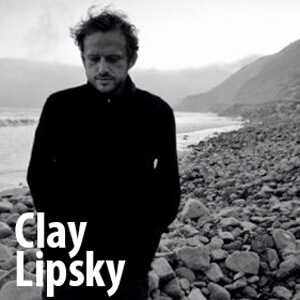Clay Lipsky is a fine art photographer & Emmy Award winning graphic designer based in Los Angeles. He has applied his unique visual style across a variety of mediums, from print and multimedia to TV and film. Despite his varied interests, photography has always been a part of Clay’s life. Recently, he has experienced a new-found interest with the medium and is now passionately focused on pursuing photography as fine art, free from clients and limitless in creative possibilities. Clay is self-taught and strives to create images that can stand the test of time. His photos have been exhibited in various group shows, including those at the Annenberg Space for Photography, MOPLA, Pink Art Fair Seoul, Wall Space, Rayko and Impossible Project Spaces in NYC & Warsaw, Poland. Clay has been published internationally in print and online, most notably with Esquire Russia, Wired Italia, Fraction, Square, Lenscratch, Diffusion, i-ref, Daily News (UK), Yahoo! Lifestyle (Germany), La Republica (Italy), Libération (France), Shots & um[laut] Magazines.
Clay Lipsky's project, In Dark Light, is intriguing on a number of levels. First, the work was created, for the most part, on a trip to Iceland and as we know, creating conceptual fine art images while in a foreign place, with no opportunity for previsualization, is not an easy task. But somehow, Clay instinctively found a narrative and way of working within a concentrated period of time. The other interesting aspect is what the work is about. Making imagery about depression, about loss and solitude has to have subtle nuances that are at once personal and universal, and Clay captured this subject with emotion and simplicity. Clay works as fine art photographer and graphic in Los Angeles. His photos have been exhibited in group shows across the country, including the Annenberg Space for Photography, MOPLA, Pink Art Fair Seoul, PhotoPlace and Impossible Project NYC. He has been featured internationally in print and online in publications such as Fraction, Square, Diffusion, F-Stop, PH and Shots Magazines. Recently, he was a featured "Ten" through Jennifer Schwartz Gallery, and North Light Press will be publishing an edition of his Cuba photos through their 11+1 series. He is also an avid self-publisher with several titles that exhibit as part of the Indie Photobook Library.
Source: www.lenscratch.com
About the series In Dark Light
This series of self portraits examines my loss of identity and enduring personal journey through depression. It is a solitary path that encompasses loss of home and parent, the pursuit of beauty, work and perseverance under no religious or visceral compass. Imagined as a vast, shadowed plane it is a private purgatory mired in fog with colors muted and senses numbed. The varied landscape acts as metaphor for life's many obstacles. Beyond the horizon lies hope for brighter days and so the lone soul carries on, albeit cast in dark light.
Discover Clay Lipsky's Interview
